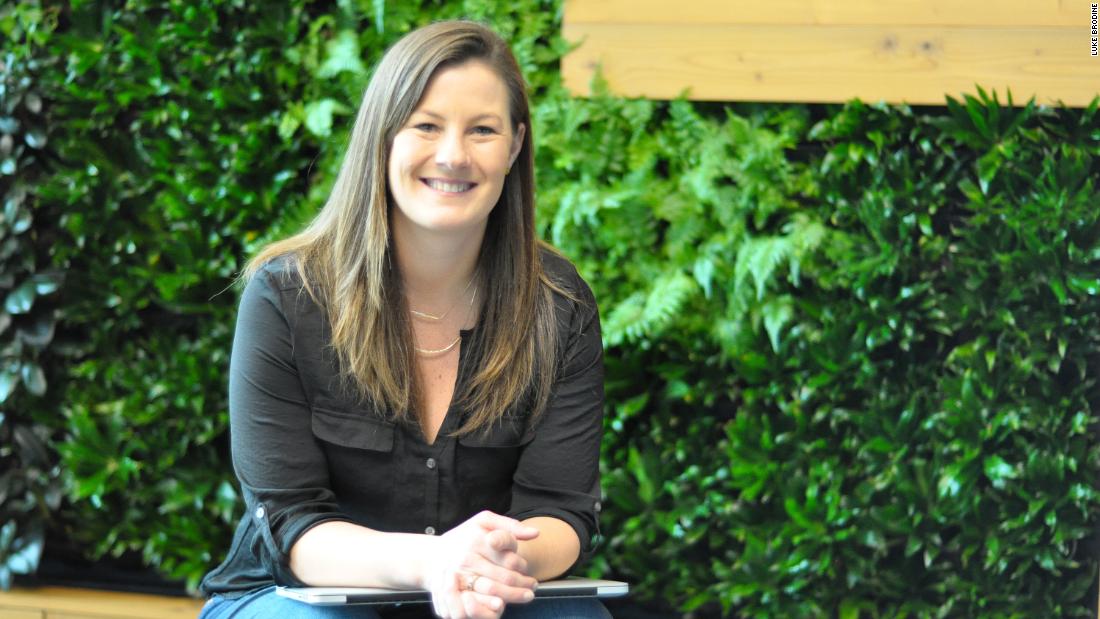Google will give every employee $1,000 to WFH. Its head of wellness explains why

As the wellness and resilience lead at Google, it’s Lauren Whitt’s job to make sure Google employees remain healthy and have access to mental health and wellness resources during these uncertain times. And that is no small task. There are 10 members of the global well-being and mental health teams, who work with all of Google’s employees across the globe. To help with the shift to working from home, the company has offered virtual training and classes. And it has shifted some of its notorious perks online. Google also recently offered all employees a $1,000 allowance to spend on equipment to help outfit their home workspaces. CNN Business spoke with Whitt about Google’s recent wellness efforts during the pandemic. Here’s what she had to say about what Google is doing to promote mental health and well being (This interview has been edited for clarity and length): What role do managers have when it comes to their team’s mental health? And what can they do to make sure their workers’ are doing OK? We are asking them to check in on the well-being of their team, to ask about how their team is doing. We do not want our managers to be therapists, counselors, advisers in any way on the mental health space. We do want them to check in on: ‘How is your well being?’ ‘How are you doing?’ ‘How is life going for you right now?’ And if there are signs or indications that there may be something going on, to be able to connect the Googler with the wealth of resources and suite of services that we have available.The final thing that we are asking managers to do is to lead with intention with their own role modeling of well-being behavior.We all have mangers, we all know that we often will see what our managers are doing before we hear what they are telling us to do. And so we are asking managers to lead by example and to role model well-being and detachment and recovery in their own lives as well. The shift from working in an expansive workspace with lots of perks to being at home all the time can be tough. How are you helping workers adapt to their new reality?I have been so impressed with Googlers’ grassroots efforts to create a community and to create so much connection between what they were doing in the office to what they are doing at home. When we are on-site, many offices have fitness centers and those coaches have taken those programs and those classes online and are doing them virtually so Googlers are still able to work out from home with people they used to work out with in the office using milk jugs and different crazy things that are around the house. We all miss the fantastic food that we had in Google cafes and many of our cafe teams and chefs are beginning to offer virtual classes online — so How to Cook classes for us to be able to pick up some of those unique and fun skills.We have groups of Googlers that are doing virtual meditation and mindfulness classes — programs called “gPause.” We have peer-to-peer mental health support through our Blue Dot community so a lot of the things that were happening in the offices, we are just bringing them virtually.Tell me about Google’s decision to offer $1,000 to employees to equip their home offices. How important is the workspace?For us to be able to provide resources for Googlers to set up the most productive workstation at home so that they have an opportunity to separate ‘When I am in this space I am focused on my work and I am focused on these things, and when I step away from this space I am able to detach from work, I am able to connect with my family, my friends, my pets, the people in my community outside of this work box’ is really important. The routine and the habits that we used to have in the office are so important for us to translate those and set new routines and new habits into the workspace and work setup that we have at home. That is really critical for us long term, as well as from a health perspective — making sure that we have the best opportunity for ergonomically correct chairs, eye-line for monitors and those sorts of opportunities as well.Are there any certain areas of wellness that you are focusing on more right now? We are continuing to invest in this concept of resilience, the ability to recognize how to be present in this moment, to face the task at hand, and to focus on what can you do today? We will continue our messages of ergonomics of proper alignments of your workspace, of having a chair that suits and supports your back, having the ergonomics and being able to alleviate some of those low back pains and muscular skeletal issues. I think we are looking into the future, on what health and wellness will look like. How will we continue to support Googlers in their home environment and in their return to work environment to ensure that movement is a priority, that sleep is the No. 1 priority for us, and that nutrition will continue to matter to Googlers, independent of where they are working. You say building resilience is important in a time like this. How are you helping employees develop that? We spent a couple years really focused on making sure we had the resources and tools for Googlers to be able to focus on their mental health and get the support they need in that space. About two years ago, we started to shift and say: ‘OK, we have those tools and resources available, what is next? How do we now really focus on the ability to cope with stress, bounce back from adversity and understand that we can rebound to be able to recover from difficult challenges?’We launched a check-in in the fall, we call it the T.E.A. [Thoughts, Energy, Attention] check-in. Our T.E.A. check is basically: where are your thoughts, where is your energy and where is your attention? And as we look at those three…is it time to take on a challenging project? Is [your energy] low? Do you need to jump up and down? Do you need to step away? Do you need to take a nap? And where is your attention? What is the one thing you can focus on today that you can control, that you can influence, that will give you purpose and meaning and optimism for today? What is Google doing to address burnout, especially now that everyone is at home and work-life balance is harder to achieve? One of our primary messages right now around burnout is being intentional about the recovery and the rest and the opportunity to turn things off, shift your focus to non-work activities. As Googlers are doing that, they are realizing that as they do recover and detach, they are able to come back to the work or come back to solving that problem with a refreshed, renewed excited perspective. We often approach the conversation of burnout with very intentional practical ways to step away from your computer every 90 minutes, to get outdoors, even if you just need to do pushups or jumping jacks or stand up in between meetings and move around and shake it out, what are these ways to be able to shift your focus during and throughout the day.Also for us, is continuing to encourage Googlers to take vacation, to step away from the work, even though you can’t travel in many cases, to be able to invest in using that vacation time as recovery time.Tell me about Google’s Blue Dot Program pre-pandemic and what it looks like now.The Blue Dot Program is our peer-to-peer mental health community. We started this program a number of years ago as Googlers wanted an opportunity to be able to talk about hard things, but they didn’t necessarily feel like it was clinical. They wanted just a peer’s perspective, somebody who had been through it, who had been where they were.That group has pivoted in a really impressive way. They are operating virtual office hours, we have different places online where you can connect virtually over Google Meet video calls to be able to talk about those things. Although the face-to-face component of that program has shifted, they have taken it virtually through Google tools and are continuing to really innovate around new ideas to be able to connect and support each other and those who are interested in joining moving forward.



